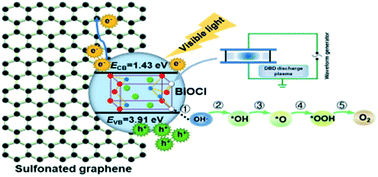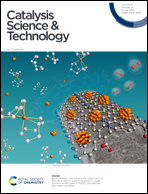Plasma modified BiOCl/sulfonated graphene microspheres as efficient photo-compensated electrocatalysts for the oxygen evolution reaction†
Abstract
Developing non-noble metal-based catalysts for the oxygen evolution reaction (OER) is of great significance. In this study, BiOCl/sulfonated graphene (BOC/GS) composites with adequate oxygen vacancies are fabricated through a hydrothermal method and plasma modification for efficient OER. Controllable generation of oxygen vacancies in BOC/GS is achieved through adjusting the loaded plasma, which is beneficial for the enhancement of electrochemical properties such as conductivity, wettability and dissociation of adsorbates. Furthermore, band structure regulation and high response to visible light are realized in BOC/GS composites, which enables light energy compensation for the electrocatalytic OER process, resulting in reduced overpotential and fast reaction kinetics. Compared with pristine BOC/GS, the overpotential of plasma modified BOC/GS is obviously improved by 270 mV at 10 mA cm−2 with a Tafel slope of 52 mV dec−1. The OER mechanism is investigated from the perspective of photochemistry and electrochemistry, which provides a novel pathway for designing new efficient photo-compensated OER electrocatalysts.



 Please wait while we load your content...
Please wait while we load your content...